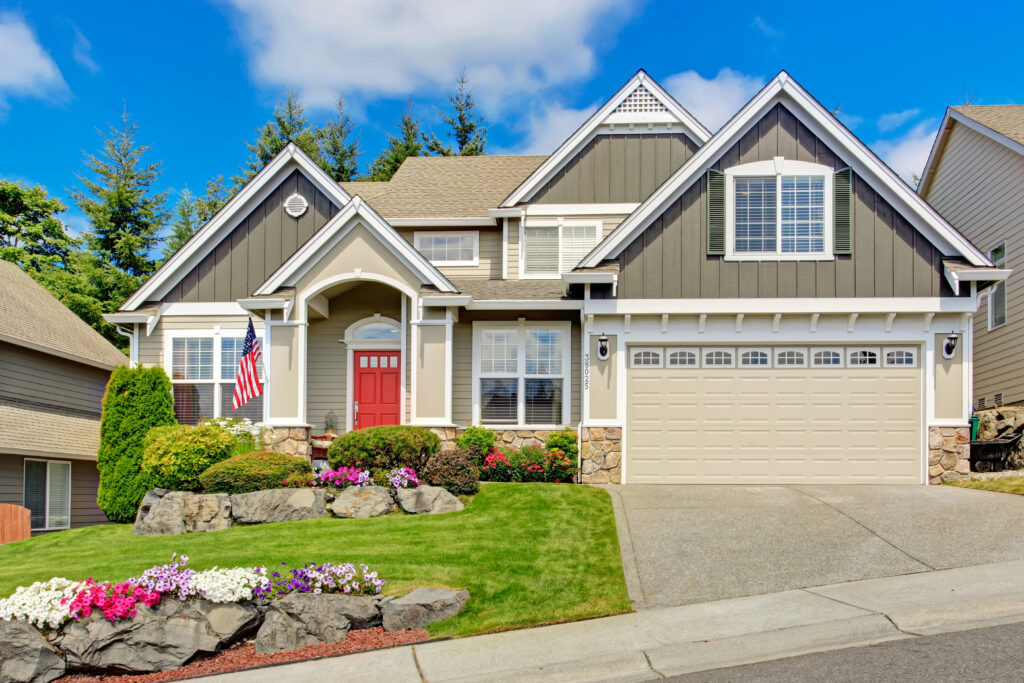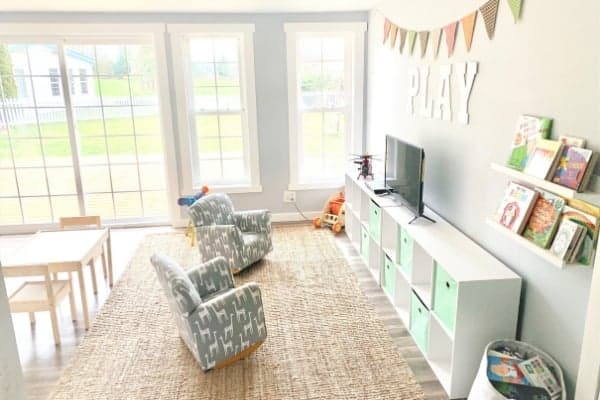Adding additional windows to a home design enhances natural light and aesthetic appeal. More windows allow sunlight to flood interior spaces, creating an airy, open atmosphere that fosters a positive and uplifting environment. This increased natural light improves mood, productivity, and overall well-being. Furthermore, well-placed windows can enhance the transition between interior and outdoor areas by framing stunning outdoor vistas. In addition to being functional, more windows can improve a home’s aesthetic appeal and give it a more significant, cozier feel. The result is a brighter, more inviting living space with improved ambiance and energy efficiency.
Introduction to Natural Light in Homes
Natural light is one of the most cherished features in modern homes. Its significance extends beyond simple illumination; it dramatically influences a living space’s ambiance and overall vibe. Sunlight streaming through windows can vividly transform the look and feel of even the most compact spaces, making them appear larger, warmer, and more welcoming. This natural resource is now seen as a fundamental component of home design, influencing everything from architectural planning to interior styling. Integrating natural light effectively can create a profound visual and emotional connection between the indoor environment and nature outside. Moreover, the widespread appeal of well-lit spaces—emphasized by the architectural community—underscores sunlight’s critical role in enhancing both homes’ experiential and aesthetic value. A brighter living space can transform any home into a more inviting and lively abode. One of the most effective ways to achieve this transformation is through adding windows to a house. When thoughtfully placed, windows do much more than just let in light—they can fundamentally alter your home’s aesthetic and functional dynamics. Window addition can enhance mood and well-being by allowing natural sunlight to flood rooms and providing stunning outdoor views. This integration with nature fosters a deeper connection with nature, which is increasingly valued in today’s fast-paced world. A strategic approach is crucial to maximize benefits such as energy efficiency, increased home value, and improved environmental comfort. This guide explores the various elements of window addition, equipping homeowners with the knowledge to make informed decisions that ensure aesthetic delight and functional excellence in their living spaces.
Benefits of Increased Daylight
Increasing daylight in residential spaces offers numerous benefits that extend beyond aesthetic appeal. Sunlight improves mental health by elevating mood and enhancing cognitive function. By promoting the synthesis of serotonin, a neurotransmitter linked to mood regulation, exposure to natural light improves emotions of well-being. Increased productivity and a happier emotional state may follow from this. Additionally, natural light helps regulate the body’s circadian rhythms, improving sleep quality and reducing the risk of sleep disorders. Increased energy, sharper focus, and greater mental clarity can all result from more sleep.
Sunlight is also essential for producing vitamin D, a nutrient crucial for bone health, immune function, and overall vitality. A lack of natural light exposure can lead to deficiencies, which may negatively impact health. Beyond these health advantages, increasing daylight can reduce reliance on artificial lighting, lowering energy consumption during the day and ultimately reducing electricity bills. This supports individual financial savings and contributes to environmental sustainability by decreasing overall energy demand. Thus, increasing natural light in residential spaces offers health benefits and contributes to a more energy-efficient, sustainable lifestyle.
Window Styles That Enhance Aesthetic Appeal
Selecting the right window style is paramount for your home’s functionality and aesthetic enhancement. The variety of styles available—from the classic elegance of bay windows to the modern sophistication of frameless glass—offers endless possibilities for personalizing your living spaces. Their protruding design allows Bay windows to add depth and create additional seating or display areas. On the other hand, casement windows, known for their excellent ventilation capabilities, offer unobstructed views, making them ideal for capturing scenic outdoor vistas. Skylights bring in an infusion of overhead light, dramatically transforming interior spaces that might otherwise be dark and enclosed. Incorporating these styles requires thoughtful consideration of the architectural context, ensuring that the new installations complement the existing design and enhance the home’s character. Such strategic integration can elevate the aesthetic appeal, creating harmonious and visually engaging spaces that delight residents and visitors.
Practical Steps for Adding Windows
Adding windows to your house is a big undertaking that must be carefully planned and carried out to meet functional and aesthetic requirements. The process begins with thoroughly assessing each room, considering factors like room orientation, purpose, and natural light needs. This will guide decisions about the windows’ placement, size, and style to ensure they complement the space while fulfilling your requirements.
Equally important is selecting the right materials and glazing options for optimal thermal efficiency and sound insulation. For instance, double-glazed windows can help with temperature regulation, while certain frame materials might be better suited for specific climates.
Collaborating with seasoned experts who can offer insightful advice at every stage is crucial. They can assist with accurate measurements and material selection and ensure compliance with building codes. Experts can also navigate the often complex zoning regulations and identify any potential challenges that could arise during installation.
By collaborating with skilled professionals, you can avoid costly mistakes and ensure the window installations are executed smoothly and efficiently. This guarantees long-term happiness with your investment by improving your home’s overall aesthetic appeal, comfort, and energy efficiency.
Energy Efficiency and Window Placement
The strategic placement and selection of windows are essential in enhancing a home’s energy efficiency. By positioning windows in locations that optimize natural light, homes can reduce the need for artificial lighting, minimizing energy consumption. Additionally, carefully selecting window materials and technologies can significantly impact thermal performance. Double glazing, which reduces heat transfer by creating an insulating layer of gas or air between panes, is a common feature of contemporary energy-efficient windows. Low-emissivity (low-E) coatings reflect heat into the home during the winter and keep it out during the summer, while gas fills such as argon or krypton improve insulation. These advancements can lower energy bills by up to 30% or more, providing substantial financial savings. In addition to being economical, energy-efficient windows help the environment by reducing carbon footprints and total energy usage. Integrating these window technologies requires careful consideration of factors such as climate, building orientation, and thermal dynamics when designing a home. For example, larger windows on south-facing walls may maximize passive solar heating in colder climates, while smaller, well-positioned windows may help prevent overheating in warmer regions. In addition to being aesthetically pleasing, well-chosen windows are essential to a home’s overall energy strategy and environmental impact mitigation.
Enhancing Home Value through Windows
Upgrading or adding new windows is a highly effective strategy for increasing property value. Modern windows, which are aesthetically pleasing and energy-efficient, serve as a key selling point in the competitive real estate market. Potential buyers recognize the long-term savings of improved insulation, better energy efficiency, and enhanced comfort. Homes featuring high-quality, energy-efficient windows are often considered more environmentally friendly and cost-effective, making them attractive to buyers looking for a wise investment. As a result, such properties frequently command a premium price, reflecting the windows’ increased appeal and functional advantages.
In addition to their economic benefits, new windows significantly improve the living experience within the home. They allow for better natural lighting, creating a brighter and more welcoming atmosphere. Enhanced airflow and ventilation also contribute to improved air quality and overall comfort. These benefits play a crucial role in elevating the everyday enjoyment of residents. With the ability to bring in more light and fresh air while offering energy savings, upgraded windows improve the ambiance and functionality of living spaces. As a practical and aesthetic upgrade, new windows provide financial returns and enrich the homeowner’s daily quality of life, making them a valuable enhancement.
Addressing Common Window Installation Concerns
When considering window installation, several concerns can arise, from regulatory compliance to ensuring structural compatibility. Careful preparation and the involvement of professional knowledge are necessary to address these issues. One key step is familiarizing yourself with local zoning laws and building codes, as these regulations may influence window size, placement, and overall design. Adhering to these legal requirements helps avoid fines and ensures the installation is up to code.
Additionally, choosing a qualified contractor is crucial. Experienced professionals help navigate the technical aspects of installation, ensuring that the project aligns with safety standards and delivers high-quality results. A well-chosen contractor can also address potential structural issues, ensuring the window fits correctly into the existing framework.
Beyond compliance and craftsmanship, considering user-friendly designs and accessibility features can improve the functionality of new windows. For instance, easy or clean windows can enhance daily use, particularly in spaces with limited accessibility.
Proactively researching regulations, hiring qualified professionals, and selecting thoughtful designs mitigate potential risks. This comprehensive strategy leads to a successful installation process, resulting in long-term satisfaction, improved home aesthetics, and energy efficiency.
External Resources
For additional insights into contemporary window construction practices and their implications for energy efficiency and aesthetic integration, it is worthwhile to consult resources such as This Old House. The expert advice contained therein covers everything from selecting styles compatible with various architectural designs to staying informed on the latest advancements in window technology. Comprehensive and accessible resources equip homeowners with valuable knowledge to support informed decision-making throughout the window addition process, ensuring optimal outcomes that enhance home comfort and value.





